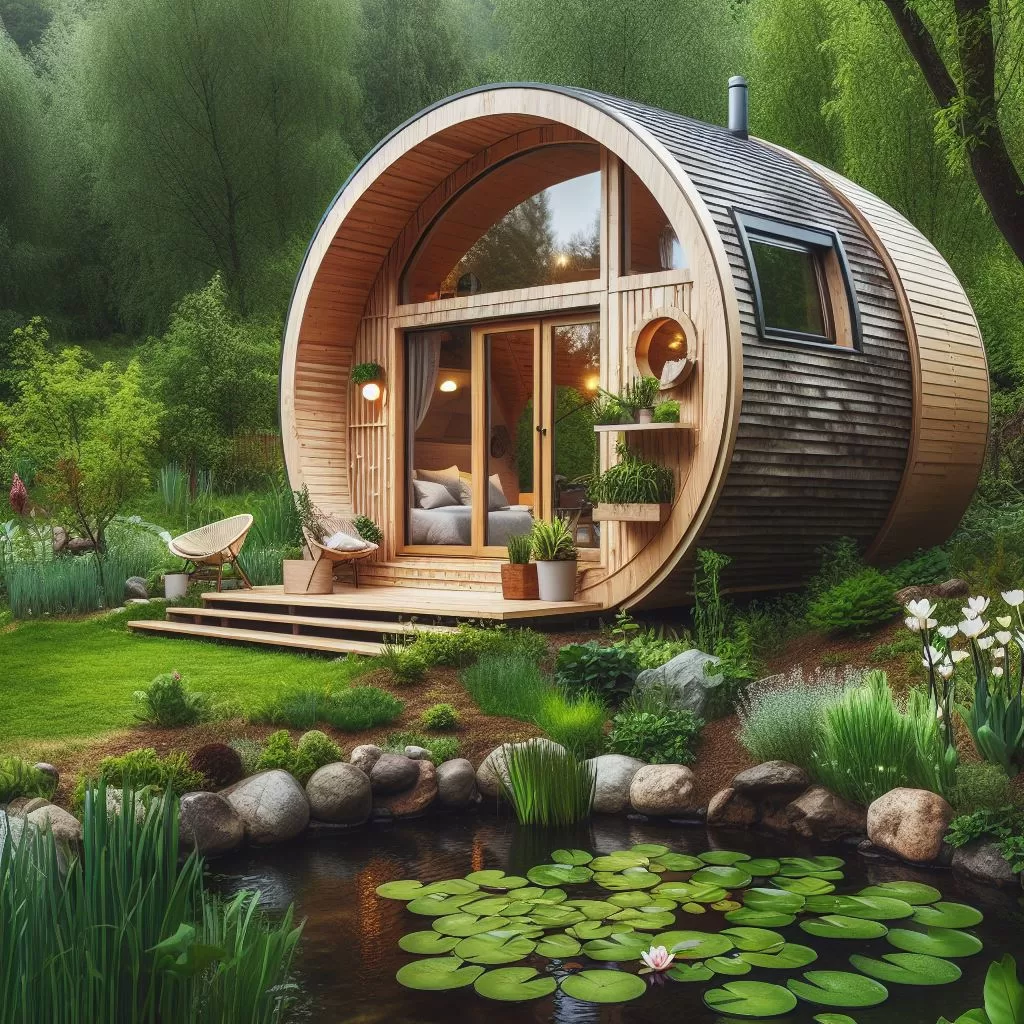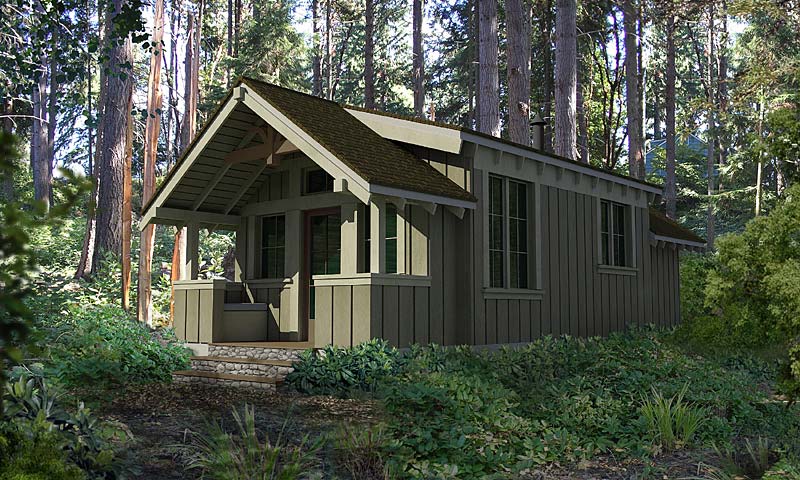The ever-evolving field of residential architecture has brought us to a fascinating crossroads: the comparison between pod homes and traditional single-family homes. This comparative analysis delves into the unique advantages and drawbacks of each, focusing on aspects such as construction, maintenance, energy efficiency, and lifestyle.
Construction
Pod Homes: Pod homes, known for their modular design, offer a streamlined construction process. Their prefabricated sections are built in a controlled factory environment, leading to fewer construction delays and a reduction in on-site labor. This method can be more cost-effective and less prone to weather-related setbacks. The construction of pod homes also benefits from a high level of quality control, as the manufacturing process in factories allows for strict oversight. This minimizes the risk of construction defects common in traditional on-site building methods. Additionally, the modular nature of pod homes means they can be easily expanded or modified by adding or removing modules, offering adaptability that is difficult to achieve with traditional construction. However, this design can sometimes limit unique architectural features and may not blend seamlessly into every neighborhood or landscape.
Traditional Homes: Traditional homes, on the other hand, offer a high degree of customization. Built on-site, they allow for more flexibility in design and materials. However, this can lead to longer construction times and potentially higher costs due to labor and material variability. Traditional home construction also provides the freedom to integrate a home into its surrounding environment more organically. This includes utilizing local materials that harmonize with the regional landscape and adhering to local architectural styles, thereby preserving cultural and historical aesthetics. Traditional construction methods allow for greater control over room sizes and layouts, accommodating specific preferences or needs of the homeowner. However, this bespoke approach can lead to a larger ecological footprint due to the diverse range of materials and more extensive site work, which can be less environmentally sustainable compared to the standardized approach of pod homes.
In both cases, the choice of construction method has significant implications for the homeowner, not just in terms of cost and time, but also in terms of future flexibility, environmental impact, and the ability to personalize one’s living space. As such, the decision between a pod home and a traditional home often hinges on a complex interplay of personal values, lifestyle needs, and long-term planning.
Maintenance
Pod Homes: In addition to requiring less maintenance due to modern materials, pod homes are often designed with sustainability in mind, which can include features like self-cleaning technologies, durable composite materials, and advanced weather-resistant exteriors. These features further reduce the need for frequent maintenance. The compact design not only simplifies upkeep tasks but also can make any required maintenance more manageable and less time-consuming. However, as these homes become more technologically advanced, they may require specialized knowledge for repairs, particularly for integrated smart home systems or unique environmental controls. The scarcity of experts in this niche area of construction can sometimes lead to higher costs for maintenance and repairs when such services are needed.
Traditional Homes: While traditional homes may require more regular maintenance, this is often due to their use of time-tested materials and construction methods. These materials, while familiar, may be susceptible to wear and tear from environmental factors like weather and aging. Regular tasks like painting, roof repairs, and gutter cleaning are common. However, the prevalence of these homes means that homeowners have easy access to a vast array of resources, from DIY guides to a wide range of professionals specializing in traditional home maintenance and repair. This accessibility can make it easier to address issues promptly and effectively, potentially reducing long-term maintenance costs. Additionally, for those with a penchant for customization, traditional homes offer more opportunities for renovations and upgrades that can improve both the functionality and aesthetic appeal of the home.
Overall, maintenance considerations for both pod and traditional homes reflect a balance between modern innovation and time-honored practices. Pod homes offer a lower maintenance lifestyle with a futuristic edge, but may pose challenges in specialized repairs. Traditional homes, while potentially requiring more upkeep, offer the comfort of familiar maintenance routines and a wealth of resources for repair and renovation. The choice between the two will largely depend on the homeowner’s priorities, whether they value cutting-edge efficiency or the flexibility and familiarity of conventional structures.
Energy Efficiency
Pod Homes: The energy efficiency of pod homes extends beyond their compact size. These structures are often at the forefront of incorporating green building practices and innovative technologies. Features like triple-glazed windows, LED lighting, and high-efficiency heating and cooling systems are common. Many are also designed with passive solar principles in mind, maximizing natural light and heat retention to reduce energy consumption. The integration of renewable energy sources, such as solar panels or small wind turbines, is increasingly standard, allowing these homes to generate a portion of their own energy needs. Additionally, the use of sustainable materials like recycled steel, bamboo flooring, and non-toxic insulation contributes to a smaller environmental footprint, enhancing the overall energy efficiency of these homes.
Traditional Homes: The energy efficiency of traditional homes is highly variable, largely influenced by when they were built and the materials used. Older homes often lack modern insulation and may have outdated heating and cooling systems, leading to higher energy consumption. However, the potential for energy-efficient renovations in traditional homes is significant. Upgrades like installing energy-efficient windows, adding extra insulation, or upgrading to high-efficiency HVAC systems can dramatically improve energy performance. Furthermore, many traditional homeowners are adopting renewable energy solutions, such as solar panels or geothermal heating systems, to reduce their reliance on traditional energy sources. These improvements not only enhance the home’s energy efficiency but can also increase its market value and provide long-term savings on utility bills.
In summary, while pod homes are typically designed with energy efficiency as a core principle, traditional homes offer the flexibility to retrofit and upgrade, adapting to modern energy standards. The decision between the two often depends on the homeowner’s commitment to energy efficiency, whether through embracing the latest in green building technology or through the gradual upgrading of a more traditional structure. Both paths offer the potential for significant energy savings and a reduced environmental impact.
Lifestyle
Pod Homes: The appeal of pod homes extends well beyond their efficient use of space; they often embody a philosophy of living that prioritizes simplicity, functionality, and environmental consciousness. These homes are particularly attractive to those who aspire to a minimalist lifestyle, reducing their ecological footprint while focusing on the essentials of living. The compact design not only encourages a decluttered and organized environment but also fosters a closer connection among its inhabitants, which can be ideal for individuals, couples, or small families. Moreover, the modern aesthetic and innovative features of pod homes often appeal to those with a penchant for technology and contemporary design. However, their typically smaller size can be a limiting factor for those who require more expansive spaces for larger family gatherings, extensive hobbies, or a home office.
Traditional Homes: On the flip side, traditional homes offer a sense of familiarity and comfort that many find appealing. Their generally larger size accommodates a variety of lifestyles, from growing families to those who frequently entertain guests or require dedicated spaces for work, hobbies, or relaxation. The ability to customize and adapt various rooms to changing needs—such as converting a spare room into a home office or a gym—adds to the appeal of traditional homes. Additionally, these homes often come with outdoor spaces like yards or gardens, providing additional areas for leisure, gardening, or outdoor activities. While they may not inherently embody the minimalist ethos of pod homes, traditional homes offer the flexibility to create personalized spaces that reflect the diverse needs and preferences of their occupants.
In essence, the choice between pod homes and traditional homes is as much about lifestyle preference as it is about aesthetic taste and space requirements. Pod homes offer a modern, streamlined approach to living, promoting efficiency and sustainability, while traditional homes provide the comfort of familiar spaces and the flexibility to cater to a broader range of needs and activities. The decision ultimately hinges on individual priorities, whether they lean towards the innovative and minimalist or the spacious and adaptable.
The Future of Sustainable Living with Greenpod
In the sustainable housing industry, Greenpod is a versatile and innovative company that specializes in constructing both pod homes and traditional homes with a strong emphasis on green design. Our approach marries the best of both worlds – the efficiency and modernity of pod homes with the spaciousness and familiarity of traditional homes.
Our homes, whether pod-style or traditional, are built using Structurally Insulated Panels (SIPs) and high-quality green materials, ensuring top-notch energy efficiency. This commitment to sustainability extends to high-performance windows and doors, optimizing thermal performance and reducing energy loss. The integration of Heat Recovery Ventilation systems in our homes guarantees a healthy living environment by providing fresh air without compromising on heat retention.
Our design philosophy also includes careful consideration of solar heat gain, utilizing natural warmth from the sun to minimize energy consumption. This, along with the low energy footprint of our homes, aligns perfectly with the modern drive towards reducing ecological impact.
Accessibility and inclusivity are at the core of our designs. Our homes are ADA compatible, catering to a diverse range of needs and making them suitable for ‘Aging in Place’, allowing residents to live in their homes through different stages of life comfortably.
The durability of materials used in our homes ensures long-lasting value, minimizing the need for frequent maintenance. This, combined with the reduced ecological footprint and the use of non-toxic, responsibly sourced materials, positions Greenpod at the forefront of healthy and sustainable living.
Greenpod’s approach to building both pod and traditional homes represents a significant stride towards the future of housing. Our homes are not just a testament to architectural innovation but also a reflection of a growing societal emphasis on health, sustainability, and efficiency. Whether one leans towards the compact efficiency of a pod home or the spacious comfort of a traditional home, Greenpod offers a green, sustainable solution that does not compromise on quality or design.
Interested? Contact us today to learn more.


